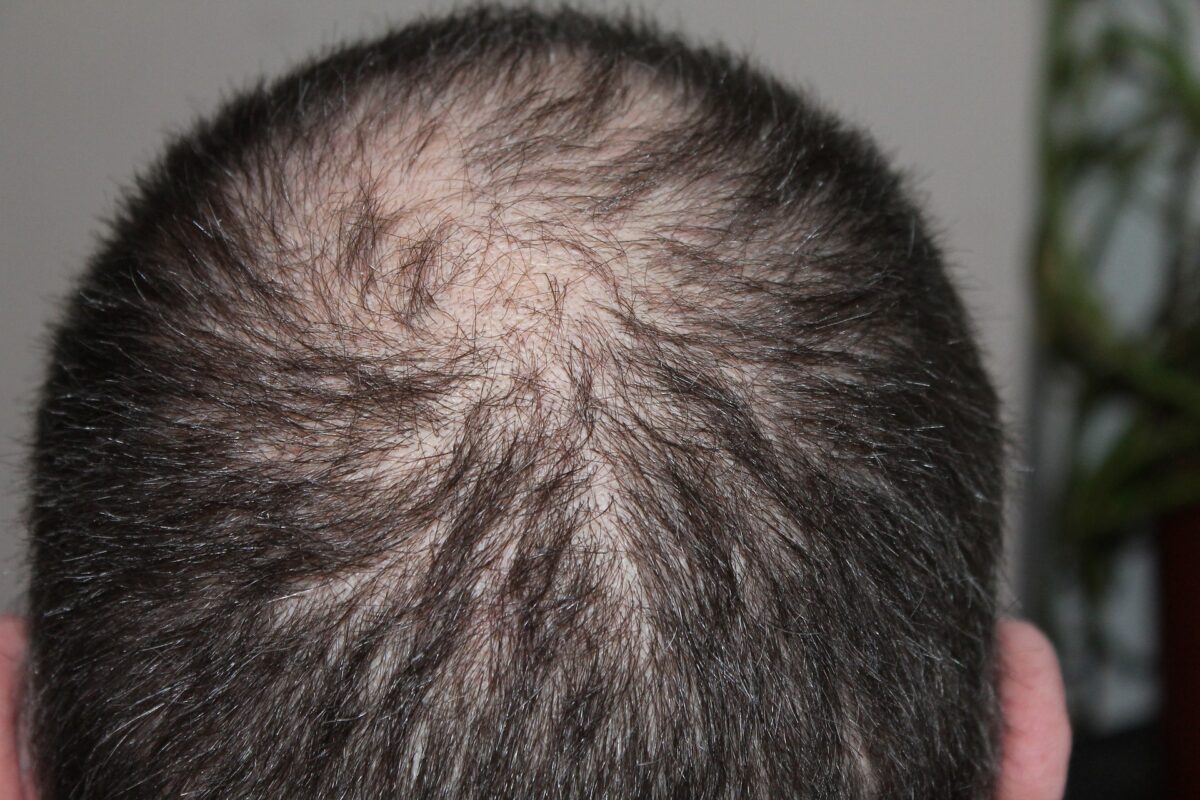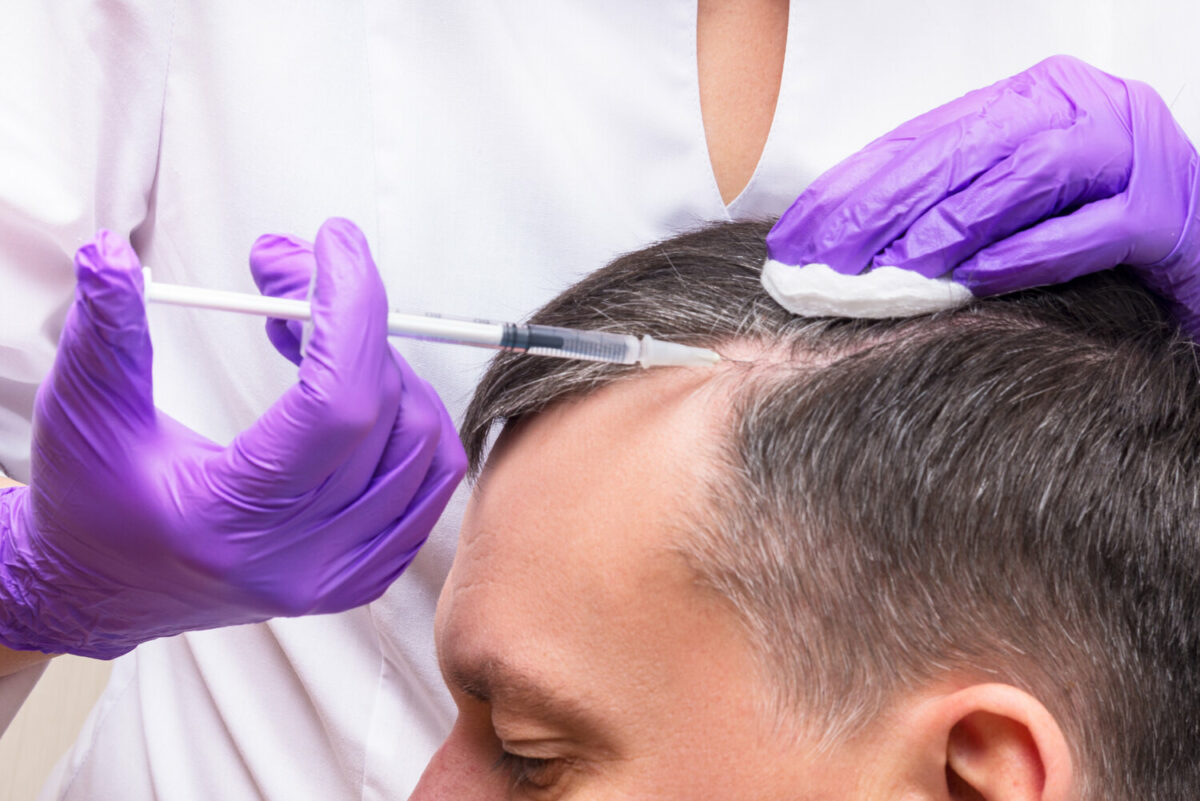For many men and women, hair loss can be a source of insecurity and can negatively impact their self-esteem. This often leads them to seek treatment, with finasteride being one of the most common solutions to prevent further hair loss. However, despite its popularity, this medication can cause adverse effects, including sexual dysfunction and breast tenderness. But don’t worry, there are natural alternatives to finasteride to address hair loss. In this article, we will explore a few options that are safe, effective, and without the unwanted side effects.

1. Saw Palmetto:
Native to the Southeastern United States, saw palmetto is a plant extract that has been used for centuries as a natural remedy for male hair loss. It works by inhibiting the production of DHT, a male hormone that causes hair loss. Saw palmetto can be consumed in capsule form or applied to the scalp as an oil. In a study published in the Journal of Alternative and Complementary Medicine, saw palmetto was found to be as effective as finasteride in improving hair growth.
The recommended dosage of saw palmetto for hair loss varies across different sources. According to a 2-year study, men with male pattern baldness were given 320 mg of saw palmetto per day. Some sources suggest a general recommended dosage between 160–320 milligrams daily.
2. Biotin:
Biotin, also known as vitamin H, is a B-complex vitamin that plays a critical role in healthy hair growth. It works by strengthening hair follicles and preventing hair breakage and damage. Biotin can be found in many foods, including eggs, nuts, and bananas, but it’s also available in supplement form. In a clinical trial published in the Journal of Cosmetic Dermatology, biotin was found to improve hair volume and thickness in women with hair loss.

3. Rosemary:
Rosemary is an herb that has been used in traditional medicine for centuries to prevent hair loss and promote hair growth. It’s believed that rosemary works by stimulating blood circulation in the scalp, which promotes hair growth. Rosemary oil can be applied topically to the hair and scalp, or consumed as a tea. In a study published in Skin med, rosemary was found to be effective in promoting hair growth in people with alopecia.
4. Lavender:
Lavender is another essential oil that has been shown to promote hair growth. It contains compounds that stimulate the growth of new hair cells and improve blood circulation in the scalp. Lavender oil can be applied topically or added to shampoo. In a clinical trial published in the Archives of Dermatology, lavender was found to be effective in treating alopecia areata, a type of hair loss that causes patchy hair loss.
5. Aloe Vera:
Aloe vera is a succulent plant that has several health benefits, including promoting hair growth. It contains enzymes and vitamins that repair and strengthen damaged hair follicles. Aloe vera gel can be applied topically to the scalp or consumed as a juice. In a study published in the Journal of Chemical and Pharmaceutical Research, aloe vera was found to improve hair growth in mice.

6.Pumpkin seed oil:
Pumpkin seed oil has gained attention as a possible natural alternative to finasteride for the treatment of hair loss. Several studies have suggested that pumpkin seed oil might improve hair count and hair thickness, especially in men with androgenic alopecia, or male pattern baldness.
A study conducted in 2014 reported that the oral administration of 400 mg of pumpkin seed oil for 24 weeks to men with androgenic baldness increased hair growth. Phytosterols, sterols found in pumpkin seed oil, are believed to promote hair growth.
The exact mechanism by which pumpkin seed oil works for hair loss is not fully understood. However, it is hypothesized that the oil may inhibit the enzyme 5-alpha reductase, which converts testosterone into dihydrotestosterone (DHT). DHT is a hormone that has been linked to hair loss.
To use pumpkin seed oil for hair growth, it can be applied topically as a scalp massage oil, or it can be ingested in capsule form. It is recommended to consult with a healthcare provider before starting any new treatment regimen.
Hair loss is a common problem that affects many men worldwide, and while finasteride may be a popular solution for hair loss, there are natural alternatives that you can use instead. Saw palmetto, biotin, rosemary, lavender, and aloe vera are all safe, effective, and without the unwanted side effects of finasteride. So instead of resorting to medication, try incorporating these natural remedies into your hair care routine to promote healthy hair growth and prevent hair loss.
Hair loss can be an alarming reality for some people. It can affect both men and women and can occur due to a multitude of factors. You may have tried several remedies with little to no results. So, what’s the deal with micro-needling? Could it be the answer to your hair loss woes? In this blog post, we dive deep into the world of micro-needling and whether or not it can help restore your hair.
What is micro-needling?
First off, what is micro-needling? Micro-needling is a cosmetic procedure that entails using a roller or pen-like tool to create small punctures in the skin. The aim of this procedure is to enhance skin regeneration and collagen production. As a hair loss remedy, micro-needling works by boosting blood flow to the hair follicles, stimulating hair growth, and improving its thickness. A series of micro-needling sessions can be performed over a few months to achieve significant results.

Does it work?
So, does it work? The short answer is yes! Micro-needling has shown to be a promising hair loss remedy. A study published in the International Journal of Trichology found that micro-needling significantly improved hair loss in both men and women. Another study conducted on female pattern hair loss revealed that micro-needling combined with topical minoxidil (a popular hair loss product) was more effective than minoxidil alone. It’s worth noting that micro-needling may not work for everyone, and you should discuss this treatment with your healthcare professional.
Here’s a a few summaries of recent research on micro-needling (often in combination with other treatments) for hair loss.
-
Dhurat, R., & Mathapati, S. (2015). Response to Microneedling Treatment in Men with Androgenetic Alopecia Who Failed to Respond to Conventional Therapy. Indian Journal of Dermatology, 60(3), 260–263. This study found that microneedling combined with conventional therapy (minoxidil) significantly improved hair growth in men with androgenetic alopecia who had not responded to minoxidil alone.
-
Dhurat, R., Sukesh, M. S., Avhad, G., Dandale, A., Pal, A., & Pund, P. (2013). A Randomized Evaluator Blinded Study of Effect of Microneedling in Androgenetic Alopecia: A Pilot Study. International Journal of Trichology, 5(1), 6–11. This randomized, evaluator-blinded study demonstrated that microneedling combined with minoxidil was more effective in promoting hair growth in patients with androgenetic alopecia than minoxidil treatment alone.
-
Almohanna, H. M., Ahmed, A. A., Tsatalis, J. P., & Tosti, A. (2019). The Role of Vitamins and Minerals in Hair Loss: A Review. Dermatology and Therapy, 9(1), 51–70. This review highlights the potential benefits of microneedling for hair loss and suggests that combining it with topical treatments, such as vitamins and minerals, may enhance its effectiveness.
-
Khatu, S. S., More, Y. E., Gokhale, N. R., Chavhan, D. C., & Bendsure, N. (2014). Platelet-rich plasma in androgenic alopecia: Myth or an effective tool. Journal of Cutaneous and Aesthetic Surgery, 7(2), 107–110. This study investigates the use of platelet-rich plasma (PRP) combined with microneedling for treating androgenetic alopecia, showing promising results in terms of hair density and thickness improvements.

Side Effects
Micro-needling, when done by a professional, is relatively safe and has minimal side effects. You may experience redness, swelling, or slight bleeding immediately after the procedure, but these symptoms usually subside after a few hours. You should avoid direct sunlight and harsh hair products for at least a day after the treatment.
Risks of at-home treatment
Performing microneedling at home can pose several potential risks, as the procedure requires precision and sterile conditions to be carried out safely. Some of the risks associated with at-home microneedling include:
-
Infection: Using non-sterile equipment or not properly disinfecting the skin before treatment can introduce bacteria and lead to infections.
-
Scarring: Incorrect technique or using needles that are too long or too deep can cause damage to the skin, resulting in scarring or the formation of keloids.
-
Hyperpigmentation: Improper microneedling technique may result in skin discoloration, particularly for individuals with darker skin tones or those prone to post-inflammatory hyperpigmentation.
-
Skin irritation: At-home microneedling may cause excessive redness, swelling, or irritation, especially if the skin is sensitive or not adequately prepared before the procedure.
-
Inconsistent results: Lack of professional expertise and standardized equipment can lead to uneven penetration of the needles, resulting in inconsistent treatment outcomes.
-
Aggravation of skin conditions: Attempting microneedling at home without consulting a healthcare professional could exacerbate pre-existing skin conditions, such as acne, rosacea, or eczema.
-
Allergic reactions: At-home microneedling combined with topical products may increase the risk of allergic reactions or sensitivities due to enhanced absorption of the products.
There are a few things to keep in mind if you opt for micro-needling for hair loss. Firstly, you should discuss starting this treatment with your healthcare professional. Secondly, micro-needling only works on hair loss caused by reduced blood flow to the hair follicles and not hair loss caused by hormonal imbalances or genetics. You will likely need to combine micro-needling with other treatments to achieve hair growth. Lastly, it’s a commitment – you may need several sessions to see significant results.
Conclusion
We hope this blog post has given you more insight into micro-needling for hair loss. While this cosmetic procedure shows promising results, it may not work for everyone, and it’s essential to discuss it with a professional. There are also other remedies and treatments both Naturopathic and pharmaceutical that may work better for some people. The key takeaway here is to be patient and consult your healthcare professional to help you find a hair loss solution that works for you.




